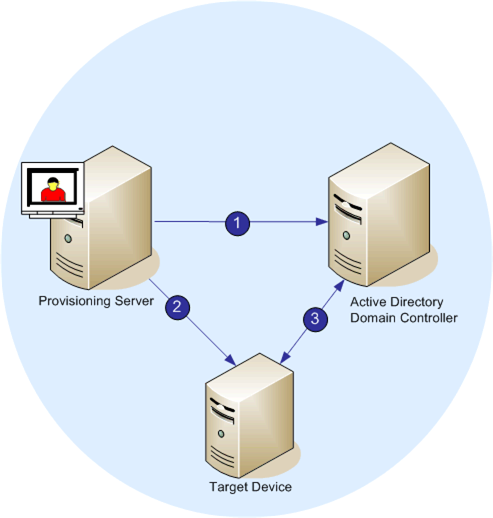-
-
Configuring vDisks for Active Directory management
-
Managing domain passwords
-
-
Deploying virtual desktops to VMs using the XenDesktop® Setup Wizard
This content has been machine translated dynamically.
Dieser Inhalt ist eine maschinelle Übersetzung, die dynamisch erstellt wurde. (Haftungsausschluss)
Cet article a été traduit automatiquement de manière dynamique. (Clause de non responsabilité)
Este artículo lo ha traducido una máquina de forma dinámica. (Aviso legal)
此内容已经过机器动态翻译。 放弃
このコンテンツは動的に機械翻訳されています。免責事項
이 콘텐츠는 동적으로 기계 번역되었습니다. 책임 부인
Este texto foi traduzido automaticamente. (Aviso legal)
Questo contenuto è stato tradotto dinamicamente con traduzione automatica.(Esclusione di responsabilità))
This article has been machine translated.
Dieser Artikel wurde maschinell übersetzt. (Haftungsausschluss)
Ce article a été traduit automatiquement. (Clause de non responsabilité)
Este artículo ha sido traducido automáticamente. (Aviso legal)
この記事は機械翻訳されています.免責事項
이 기사는 기계 번역되었습니다.책임 부인
Este artigo foi traduzido automaticamente.(Aviso legal)
这篇文章已经过机器翻译.放弃
Questo articolo è stato tradotto automaticamente.(Esclusione di responsabilità))
Translation failed!
Managing domain passwords
When target devices access their own vDisk in Private Image mode, there are no special requirements for managing domain passwords. However, when a target device accesses a vDisk in Standard Image mode, the Provisioning Server assigns the target device its name. If the target device is a domain member, the name and password assigned by Provisioning Server must match the information in the corresponding computer account within the domain. Otherwise, the target device is not able to log on successfully. For this reason, the Provisioning Server must manage the domain passwords for target devices that share a vDisk.
To enable domain password management you must disable the Active Directory-(or NT 4.0 Domain) controlled automatic re-negotiation of machine passwords. This is done by enabling the Disable machine account password changes security policy at either the domain or target-device level. Provisioning Server provides equivalent functionality through its own Automatic Password Renegotiate feature.
While target devices booting from vDisks no longer require Active Directory password renegotiation, configuring a policy to disable password changes at the domain level applies to any domain members booting from local hard drives. This may not be desirable. A better option is to disable machine account password changes at the local level. To do this, select the Optimize option when building a vDisk image. The setting will then be applied to any target devices that boot from the shared vDisk image.
Note: The Provisioning Server does not in any way change or extend the Active Directory schema. Provisioning Server’s function is to create or modify computer accounts in Active Directory, and reset passwords.
When domain password management is enabled, it:
- Sets a unique password for a target device.
- Stores that password in the respective domain computer account.
- Gives the information necessary to reset the password at the target device before it logs on to the domain.
Password Management Process
With password management enabled, the domain password validation process includes:
- Creating a machine account in the database for a target device, then assign a password to the account.
- Providing an account name to a target device using the Streaming Service.
- Having the domain controller validate the password provided by the target device.
Share
Share
In this article
This Preview product documentation is Citrix Confidential.
You agree to hold this documentation confidential pursuant to the terms of your Citrix Beta/Tech Preview Agreement.
The development, release and timing of any features or functionality described in the Preview documentation remains at our sole discretion and are subject to change without notice or consultation.
The documentation is for informational purposes only and is not a commitment, promise or legal obligation to deliver any material, code or functionality and should not be relied upon in making Citrix product purchase decisions.
If you do not agree, select I DO NOT AGREE to exit.
